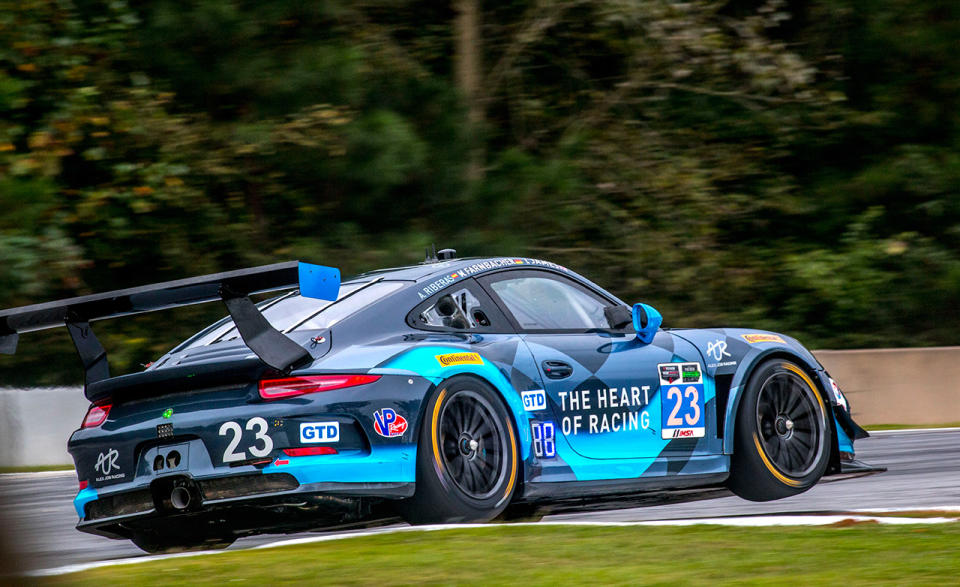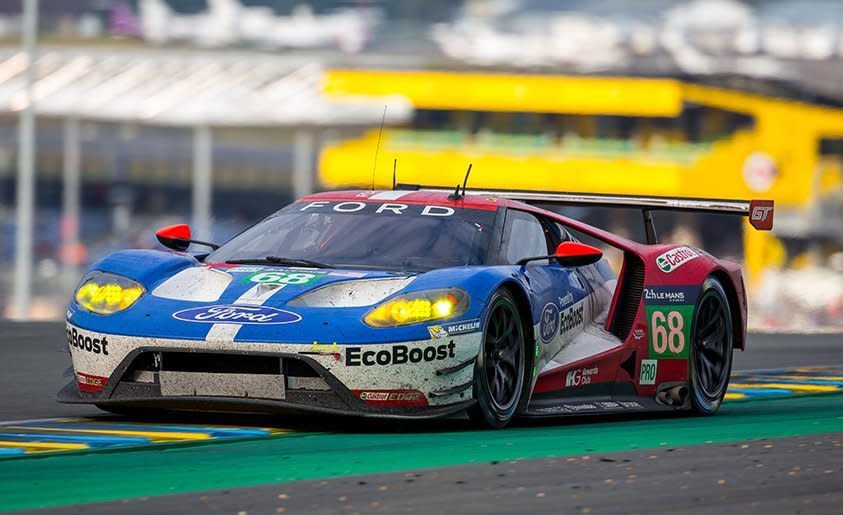The Balance of Heartbreak at Le Mans


From the October 2016 issue
If anyone has perspective on Le Mans, it’s Porsche. The rennwagens from Zuffenhausen have made the trek to the ancient seat of the Plantagenet kings for so long that when they installed the Porsche Curves to slow down the track between Arnage and Maison Blanche in 1972, Porsche could already claim 21 years of history at the circuit. No brand has won overall more times—18 after this year’s bizarre last-lap croak of the leading Toyota—or can boast more consecutive victories. At breakfast before this year’s running, three-time winner Hurley Haywood recounted how he got lost on his first trip in 1977 and slept in his rental car in the parking lot below the Gothic majesty of the Cathédrale Saint-Julien as the Porsche team searched frantically for him. Just one of a million stories.
So it was stunning when current Porsche GT racing boss Frank-Steffen Walliser nearly broke down in the Friday press conference this year, vowing to fight last-second Balance of Performance changes that seemed to disadvantage the Porsche 911s. Sixty-five years of loyalty, it seemed, were being trampled in favor of the sexy new thing from Dearborn, the Ford GT, which, along with the Ferrari 488, was suddenly running well above the pace after post-testing rule changes. Was the Automobile Club de l’Ouest trying in its jambon-handed way to engineer a repeat of the 1966 Ford-versus-Ferrari battle? Speculating on the ulterior motives of the French stewards is its own sport at Le Mans. And, after the Fords and Ferraris outpaced everyone in GTE Pro for 24 hours to a split-hair finish, Ford taking the historically symmetrical win, it certainly looked fishy.

The #23 Porsche 911 GT America races on the track during practice for Petit Le Mans at Road Atlanta.
Balance of Performance is what they call the convoluted effort to equalize the speeds of dissimilar cars in the same class, especially the production-based GT classes. A diverse menagerie of exotic door-slammers fighting fang-and-talon to the finish is the goal. BoP, ideally, should make it happen by encouraging automakers to bring whatever hot production car they’ve got, from the Porsche 911 to the Aston Martin Vantage to the Chevy Corvette to the Ford GT, and providing a decent chance of winning. Get BoP right through constant weight, restrictor size, and boost adjustments, and more automakers will be tempted to develop cars and jump in, which can only be healthy for the sport and for sports-car buyers.
However, in the world’s most famous 24-hour race, even the tiniest advantages can work magic. Add in the factor of teams knowing how to game the system by, say, sandbagging the car in the test sessions to thereby score favorable changes from the rulemakers, and controversy flourishes like mold on month-old fromage. Writer Marshall Pruett spent many hours at Circuit de la Sarthe this year covering the BoP fracas. His take? “Through ineptitude and artful manipulation by the teams,” he told me, “a small group of technical sheriffs whom nobody knows were given the power to make a great race or screw things up completely.” Pruett doesn’t see nefarious schemes; he sees an inexperienced committee using outdated methods to try to control a mob of sophisticated cheats. And, as the saying goes, there are only two kinds of racers: cheaters and losers. Pruett also sees, lamentably, a sport that has been turned over to the referees. Racing’s decline, in his eyes, goes hand in Nomex glove with the latter-day swelling of the rulebook and the despotism of the stewards. As Pruett points out, they don’t add extra shoes to weigh down bigger horses at the Kentucky Derby or make LeBron James play in moon boots. Outcomes shaped by rules and referees are a disease on sport.

The #68 Ford GT races on the track during the 24 Hours of Le Mans in Le Mans, France.
Fixing what ails racing raises the question of exactly why we are drawn to it. Is it the sleek cars, the absurd speeds, or the close competition? NASCAR has the bunched-up fields, but the cars are dull clones. Le Mans has the car variety but infighting over how to manage it. Drop all rules and it’s an arms race, an upward cost and speed spiral that will lead to casualties, haves and have-nots, and series implosion.
I’m not even convinced you can “fix” racing. No matter how perfect the formula, it will never have what most ball sports and some newfangled youth interests such as drone racing and eSports gaming offer: low barriers to audience participation. Kids can play ball sports in leagues or the backyard or play Dota 2, the online game for which last year’s international championship in Seattle paid an $18.4 million purse. As the do-it-all-socially, GoPro generation comes of age, auto racing stands apart as our most passive of pro sports. It is something to watch but, for most of us, never to do.
Alas, Le Mans this year was a corker. Sure, BoP played a role, but not as much as racecraft. Maybe Ford wrote a big check, maybe it got a rule break, but Le Mans is still an incredibly difficult thing to win, as a wander through the pits at 4:00 a.m. proves. BoP merely set the stage; the teams had to perform. People doing amazing things with machines; that’s why we come.

 Yahoo Autos
Yahoo Autos 